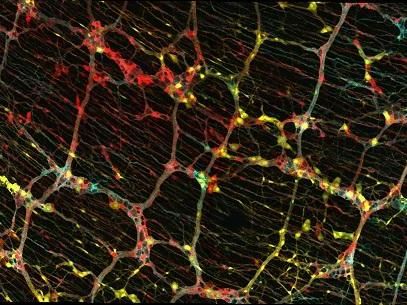New research offers insight into birth defects
University of Florida researchers have mapped the cellular origins of external genitalia by studying bird embryos, giving scientists insights into the evolution and embryonic development of mammals and other closely related species as well as clues to the origins of genital birth defects. Researchers Martin J. Cohn, Ph.D., and Ana Herrera, Ph.D., report this key finding in edition of the online journal Scientific Reports.
“We’ve only just started to understand the development of external genitalia — the penis, urethra, scrotum, clitoris and labia — at the molecular genetic level,” said Cohn, a Howard Hughes Medical Institute scientist and a professor in the department of molecular genetics and microbiology in the UF College of Medicine. “At the genetic level, little is known about how the development of external genitalia is controlled. This has only been studied for a little over a decade, lagging years behind our understanding of other organ systems.”
This new study provides insight into how the origin of cells that form the genitalia and the location of such cells during embryonic development play a role in genital birth defects. External genital birth defects occur at a high frequency in humans, where one out of every 200 males born has hypospadias, or the malformation of the opening of the urethra, according to the Centers for Disease Control and Prevention. This and other genital birth defects could be explained by the discovery.
In this latest article, Cohn and Herrera, a recent doctoral graduate of the UF College of Medicine Interdisciplinary Program in Biomedical Sciences, found the early location and path of the embryonic cells that form genitalia, called progenitor cells, through careful tracking using fluorescent dyes in chicken embryos.
When the embryo starts to form, it resembles a flat sheet of cells that has not yet transformed into the various structures of the body. The genital progenitor cells were found to be stretched out at the far ends of the embryo in two distant regions, said Cohn, a member of the UF Genetics Institute.
Upon the stage of embryonic development when the body wall forms, the cells at the left and right sides of the sheet fold together, enclosing the internal organs and forming a three-dimensional embryo; the left population of genital progenitor cells joins with the right population just below the abdomen, between the developing legs.
Interestingly, although they must join, the two groups of cells responsible for genital development never intermingle over the left or right boundary, which is formed by the urethra, and develop into the respective sides of the external genitalia.
This process might explain why some animals like snakes and lizards naturally develop paired penises — the two populations of cells remain separate, each forming a penis. These findings also raise the possibility that birth defects like hypospadias and epispadias occur when the two populations of cells fail to join together at the boundary.
“We now know where the cells that are susceptible to these malformations reside in the early embryo,” Cohn said. “This makes it possible to study their biology at much earlier stages of development, before the organs begin to form.”
In addition, the researchers found that the genital progenitor cells sit next to the populations of cells that will form the legs.
“The genetic instructions that set up limb-forming regions have been known since the 1990s,” Cohn said. “Identification of the genital progenitor cells is an important first step toward identifying the genes that instruct these cells to form organs of the genitalia and lower urinary tract.”
Cohn’s lab has made numerous discoveries that have illuminated the evolution and development of genitalia across species. Just this year, he and his collaborators have published studies on genital evolution and development in mammals, birds, turtles, alligators, lizards and snakes.






















































